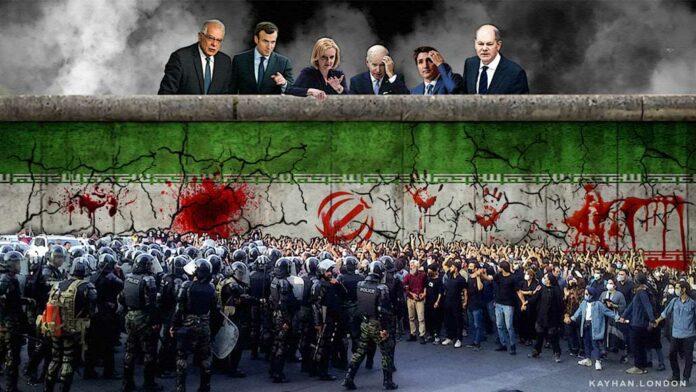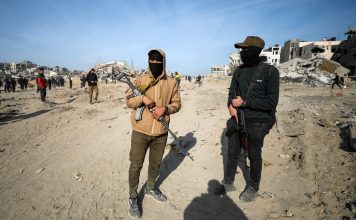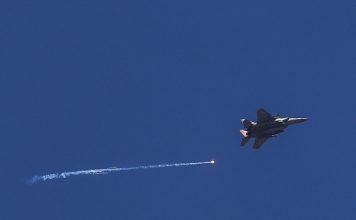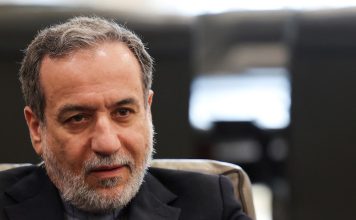By Amir Taheri
[An Arabic-language version of this column was first published by Bloomberg’s Arabic-language website Mashraq on Dec.31, 2022]
“What to do about Iran?”
For more than four decades, that is to say since the Islamic Revolution of 1979, the question has intrigued analysts and policymakers across the world. The answer is: first, try to understand it.
In fact, the question could be rewritten in this way: What to do about the Islamic Republic in Iran?
The puzzlement expressed in the question “What to do about Iran?” is caused by the assumption that what happened in 1979 was a mere change of government, and that Iran has continued to function as a normal nation-state.
That assumption has led to attempts at dealing with the new regime in Tehran in the classical, established mode of relations among nation states since the Westphalian Treaties of the 17th century.
In reality, however, the Islamic Revolution of 1979 was aimed at destroying Iran as a nation based on the Westphalian — and thus “infidel” — model of socio-political organization of societies, and recast it as a vehicle for promoting and protecting an ideology partially based on the duodecimal Shi’ite version of Islam and heavily influenced by misunderstood Marxism and the Third-Worldism fashionable in the 1960s.
This means that the Islamic Republic isn’t primarily interested in what classical nation-states are interested in — that is to say security, commerce, prestige, access to natural resources and capital markets, and forming partnerships and alliances. Its overriding aim is to make others, hopefully the whole world, resemble itself: that is to say, according to its founder Ayatollah Ruhallah Khomeini, creating a new World Order based on “pure Muhammadan Islam.”
The strategy is to turn nation-states into empty shells and a façade for a parallel authority wielding real power. In Iran, the ayatollah created the Islamic Revolutionary Guards Corps (IRGC) but turned the national regular army into an empty shell. He kept an elected parliament (Majlis) as an empty shell, but transferred real decision-making to the House of the Leader (Beit-e-Rahbar).
Various positions — such as President of the Republic and cabinet ministers — were created as facades. Provinces had formal governors, but real power rested with local Prayer Leaders appointed by the “Supreme Leader.” There are also two kinds of courts in the Islamic Republic: those left over from the pre-revolutionary era when Iran was a normal nation-state applying penal rules based on the Napoleonic Code, and the Islamic Revolutionary courts enforcing a weird version of the Shariah.
Abroad, the Islamic Republic has formal ambassadors, while the “Supreme Leader” controls foreign relations through his own “Special Representatives” in key capitals. In London, for example, the office of the “Special Representative of the Supreme Leader” employs more people than the formal Embassy of the Islamic Republic.
That a tectonic political change should lead to a period of transition from one version of the state to another was recognized by classical Persian historians.
The medieval historian Abul-Fazl Byeyhaqi, for example, saw several phases in that transition. The first phase is conquest, when a tribe or supporters of a new and schismatic version of religion conquer a territory. The next phase is known as “domination,” when the new rulers establish their position as the strongest element in an as yet uncertain balance of powers. The third phase is known as “control” when the writ of the new rulers is read across the conquered territory.
That is followed by a fourth phase, governance, in which the new rulers create an administration to further their interests, and deny space and resources to active or potential rivals. It is only in the fifth and final phase that the new rulers create a state (dolat in Persian and dawlah in Arabic), a structure capable of thinking and operating beyond self-preservation and/or the promotion of tribal interests or schismatic doctrines.
The length of that transition, from conquest to state-building, varies in different countries which have undergone tectonic political changes. It took post-revolutionary France more than a quarter of a century to rebuild itself as a nation-state. In post-revolution Russia, as in the Soviet Union, the journey between phase one and phase five took almost 30 years. Post-revolution China, too, transferred itself into a nation-state.
In all of those cases, the re-emerged state never totally discarded the memory of the revolution or its shibboleths. But it was clear that in key domains the interests of the state trumped the ambitions of revolution. That enabled other nation-states to resume more or less normal relations with the re-emerging states in France, Russia and China. The re-emerging states could become competitors, rivals, or even, on occasion, adversaries, but, respecting the rules of state behavior, didn’t act as foes or deadly enemies.
Post-revolution France dissolved the Grande Armee (Great Army) that was supposed to export the revolution. The Soviet Union disbanded the Comintern and the Cominform, which pursued a similar goal. China ditched “The Congress of Peoples,” its vehicle for exporting revolution.
The Islamic Republic in Iran, however, has remained stuck in phase four of the transition process from revolution to statehood. It has posed as a state, largely to confuse if not to deceive the outside world, including its supposed allies, but has been unwilling to behave like a normal nation-state. The current “Supreme Guide” Ayatollah Ali Khamenei has repeatedly said that the Islamic Republic shall never become “normal.” The top theoretician of the system, the late Ayatollah Muhammad-Taqi Givehchi (alias Mesbah-Yazdi), asserted that the Islamic Republic was “a vehicle for a divine mission” that ought to continue until the Return of the Hidden Imam at the end of time.
One of Khomeini’s first acts in 1980 was to create an Office for Exporting Revolution, headed by Ayatollah Hadi Khosrowshahian. First located within the Islamic Ministry of Foreign Affairs, the office was to grow into a vast political, financial, and military network with various branches. Today, one branch is called the Islamic Awakening Secretariat, under former Foreign Minister Ali-Akbar Velayati. Another is called The Islamic Convergence Assembly, headed by Ayatollah Mohsen Araki.
The military wing of the network is known as the Quds (Jerusalem) Corps, commanded by Major-General Ismail Qa’ani that runs surrogate militia units under various labels such as Hezbollah, Hashd al-Shaabi, Ansar al-Allah, Asayeb al-Haq, the Fatemyoun Brigade, the Zeynabioun Division, the Islamic Jihad etc. in Iraq, Syria, Lebanon, Gaza and Yemen. According to unofficial estimates the Quds Corps now commands over 150,000 fighters in the countries mentioned, costing Iran around $2.2 billion a year.
In all of the countries involved, the aim has been to turn existing state structures into empty shells while real power is exercised by parallel organs controlled by Tehran. Some of those countries, notably Iraq, retain a semblance of independent statehood within limits set by the “Supreme Leader” in Tehran. In Syria, official state structures are limited to Damascus and its environs, while Russia, Turkey, the United States and the Islamic Republic control their respective patches of territory.
In Yemen, Tehran’s domination is exercised through a chunk of territory in the north controlled by the Houthi militia. Tehran has also succeeded in turning the Lebanese state into an empty shell, while real power is exercised by Islamic Republic’s exercised by surrogates in all communities, the largest being the local branch of Hezbollah.
The irony is that Iran, even as a nation-state rather than a vehicle for ideology, could have gained influence, not to say a hegemonic position, in all of those countries, as was largely the case before the 1979 revolution. Having failed to turn itself into a nation-state, however, the Islamic Republic is faced with a dire choice: either become like others in the neighborhood, or try to turn all of its neighbors into something resembling itself.
Failing to understand that Iran has not achieved the transition outlined above has led to the failure of several attempts by various countries to normalize relations with the Islamic Republic.
In 1979, just weeks after Khomeini had seized power, US President Jimmy Carter wrote a personal letter to the ayatollah offering “friendship and cooperation.” Carter’s National Security Advisor Zbigniew Brzezinski met Khomeini’s Prime Minister Mehdi Bazargan in Algiers while the US released a first shipment of arms for Iran. Carter never understood that Khomeini’s new regime did not wish to, and indeed could not, behave like a nation-state. The ayatollah’s response came when “students” raided the US Embassy in Tehran and took its staff as hostages.
Still refusing to see the difference between the behavior of a state and the shenanigans of a revolution, Carter used tools, including a botched military operation and a set of classic sanctions, designed to influence nation-states into changing their attitude. Carter’s successor President Ronald Reagan shared that misunderstanding but tried other tools of classic state-to-state relations: sending a secret mission to Tehran and smuggling arms that Iran needed to fight the Iraqi invader.
A grinning Vice President George H.W. Bush asserted that “goodwill breeds good will.” It didn’t. The Islamic Republic took more hostages, and sponsored the attack on the US base in Beirut, killing 241 Marines.
President Bill Clinton went for “containment,” another classic tactic in dealing with a normal nation-state, first illustrated by President Dwight Eisenhower’s Secretary of State John Foster Dulles in his “quarantine the aggressor” doctrine against the USSR. Clinton also “apologized” for unspecified “wrongs done by my nation” to Iran, and, unable to see the difference between a state and a revolution, tried to set up a meeting with Hojat al-Islam Muhammad Khatami, a cleric playing the role of President of the Islamic Republic at the time.
President George W. Bush went for “cooperation” as a means of coaxing the Islamic Republic towards normality. He gave the mullahs a direct say in deciding the fate of Afghanistan and Iraq, and lifted a series of sanctions. The result was an intensification of the Islamic Republic’s behavior as a vehicle for ideology, especially in the Middle East, rather than a normal nation-state.
Saudi Arabia also played the cooperation card during the interregnum stewardship of Crown Prince Abdullah bin Abdul-Aziz, who visited Tehran and described Hojat al-Islam Hashemi Rafsanjani, another cleric playing the role of President at the time, as “a brother.” Riyadh increased the Hajj pilgrimage quota for Iranians and helped finance and organize a summit of the Islamic heads of state in Tehran. The Islamic Republic responded with intensified propaganda against the kingdom, fomenting trouble in neighboring Bahrain, recruiting militias in Yemen and, later on, ordering a raid on the Saudi diplomatic representation in Iran.
The US, the regional powers and to an even larger extent the European Union powers failed to answer the “what to do about Iran” answer, because they narrowed down their options to either a full-scale military invasion, as happened in Iraq under Saddam Hussein, or appeasement. And since the first option lacked public support in the countries concerned and the second option produced opposite results, the outcome was a strategic paralysis that further encouraged Ayatollah Khamenei’s “ no to normalization” posture.
President Barack Obama took the appeasement option to its limits – to the point of smuggling Samsonites full of cash to ease Tehran’s cash flow problem. He also agreed to conclude a “nuclear deal” with Tehran outside international frameworks established for state-to-state relations. Supported by the EU, he created a parallel organ to the UN Security Council in the shape of the so-called 5+1 group, negotiating a deal that would have no one’s signature, as Tehran had demanded, and would not be submitted to the US Congress for approval.
An additional sweetener was the granting of 1,500 permanent resident certificates, or “Green Cards,” to Islamic Republic officials or their associates, while over 6,000 children of Khomeinist officials received visas to study at US universities. Obama’s appeasement encouraged Tehran to expand its “exporting revolution” agenda to include several Latin American nations.
All along, US and European policymakers made a song and dance about preventing Iran from building a nuclear bomb, thus ignoring the fact that even a non-nuclear Islamic Republic remained a threat to peace and stability, and a recidivist in the use of terror and hostage-taking as a tool of policy.
I believe that President Donald J. Trump was prepared to go even further in appeasing Tehran, provided that it could all be done with public photo opportunities. He sent a personal letter to Khamenei full of music and moonlight themes, to be delivered by the then Japanese Premier Shinzo Abe in person. Khamenei saw that as the final sign of the weakness of the “Great Satan,” granted the hapless Abe a brief audience and gave him a lecture, but refused to even accept Trump’s letter –and sent the Japanese courier packing.
Throughout that 44-year-long saga, the outside world forgot possibly the only force capable of breaking the logjam: the silent majority in Iran. At this writing, a part of that silent majority has been in open revolt against the Islamic Republic for three months. The seemingly grassroots uprising may have provided the answer to the question posed above, through slogans that indicate a deep desire to close the chapter of the Islamic Revolution and goad Iran back into the international system as a normal nation-state — as happened in France, Russia and China after their respective revolutions.
The solution to the so-called “Iran problem” is regime change – a prospect desired by a substantial portion, if not a majority, of the Iranian nation, and achievable by Iranians themselves. How long that journey might take is anyone’s guess, but one thing is certain: even if there are stops and starts, it will never lose sight of the desired destination.
In the meantime, all of those interested in helping Iran turn back into a nation-state should stop appeasing the Islamic Republic. Iranians are not asking anyone to invade Iran or impose further economic sanctions. All that they are demanding is for the outside world to show that the current regime cannot have its bread buttered on both sides, behaving as a rogue state but demanding the deference deserved only by normal nation-states.
The good news is that the Islamic Republic is at its most vulnerable position for four decades and, notwithstanding the bragging by a few fantasists in Tehran, is hit by the law of diminishing returns in its “exporting revolution” strategy.













I love you, Ostaad!
This is an absolutely most thorough observation that leaves nothing out. It is amazing how you have systematically elaborated every detail of the Islamic disaster that Iran has suffered from for over 4 decades.
I sincerely hope that the right ears hear your truth, Sir.
Noush…